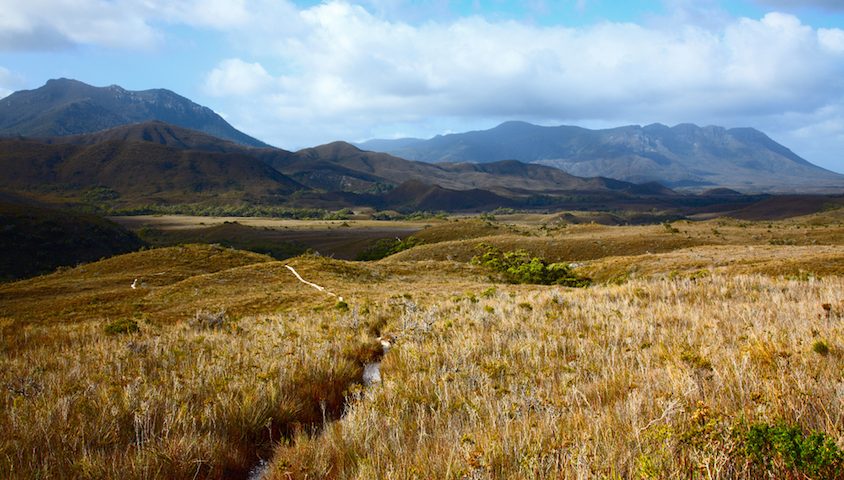It’s one of the most remote walking routes in the world, but tourism operator Ian Johnstone wants to run guided tours and have his guests stay in five, self-contained, private huts along Tasmania’s South Coast Track.
The track runs for 84 kilometres, from Melaleuca to Cockle Creek, inside the Wilderness World Heritage Area of Southwest National Park, taking in some of Australia’s most rugged coastline. The walk is considered more difficult to access than the better known Overland Track.
As reported in the media, former leader of the Australian Greens, Bob Brown has gone on record to say the proposal of private development in Southwest National Park is a “nightmare come true” and questions why there hasn’t been a stronger outcry from walking clubs.
Both the Bushwalking Tasmania president Andrew Davey and the Hobart Walking Club president Philip Le Grove expressed tacit support for the proposal when speaking with ABC News, with Davey indicating that a few huts won’t detract from the wilderness nature of the area, but Brown says this attitude misses the point.
“It’s a simple question of where do you draw the line. Environmentalists tend to support the idea that the line is the boundary of the National Park, which should remain public land. Now you have people saying we should allow private development in these areas – but where will that lead?”
Bob Brown is a current member of the Launceston Walking Club and honorary life member of the Hobart Walking Club.
“As we get older, we start to think about comfortable ways we can get out and do the things we used to do when we’re younger,” Brown said. “If they’re to be considered and built by the government that’s fine, but instead they’re built for the top end, wealthy people to the exclusion of everyone else.
“The bush experience is quickly becoming proportionate to your wallet, rather than every member of the Australian public being entitled to an equal share.”
Speaking with David Atkins, secretary of Bushwalking Tasmania, Wild discovered that many club members agree with Brown’s thinking.
“I think there’s been a bit of a misunderstanding from what’s been said in the media,” Atkins said. “I don’t think many people actually support the proposal, but see this kind of development as inevitable.
“We’re not necessarily opposed to it so long as we don’t lose access to our traditional walking areas.”
Citing the recent development of the Three Capes Track, Atkins said the clubs had been amenable to the government’s plans for developing the area as long as the clubs maintained access and free camping sites.
“It’s taken three to four years to get them [the government] to agree to us maintaining tent camping there and if it wasn’t for the clubs, camping would no longer be possible. Now they’re proposing private huts along the Three Capes Track as well.”
If such restrictions were to occur along the South Coast Track, Atkins says the walking clubs would be strongly opposed to it, noting that the Launceston Walking Club recently voted to oppose the hut developments.
“The private tourism operators want to build in these world-renowned locations because they’re easy to market, while the government thinks it means easy income for them so they will let the operators do what they like,” Atkins said.
Do you know more? Share your thoughts and opinions with us via our new contact address: contact@wild.com.au.


